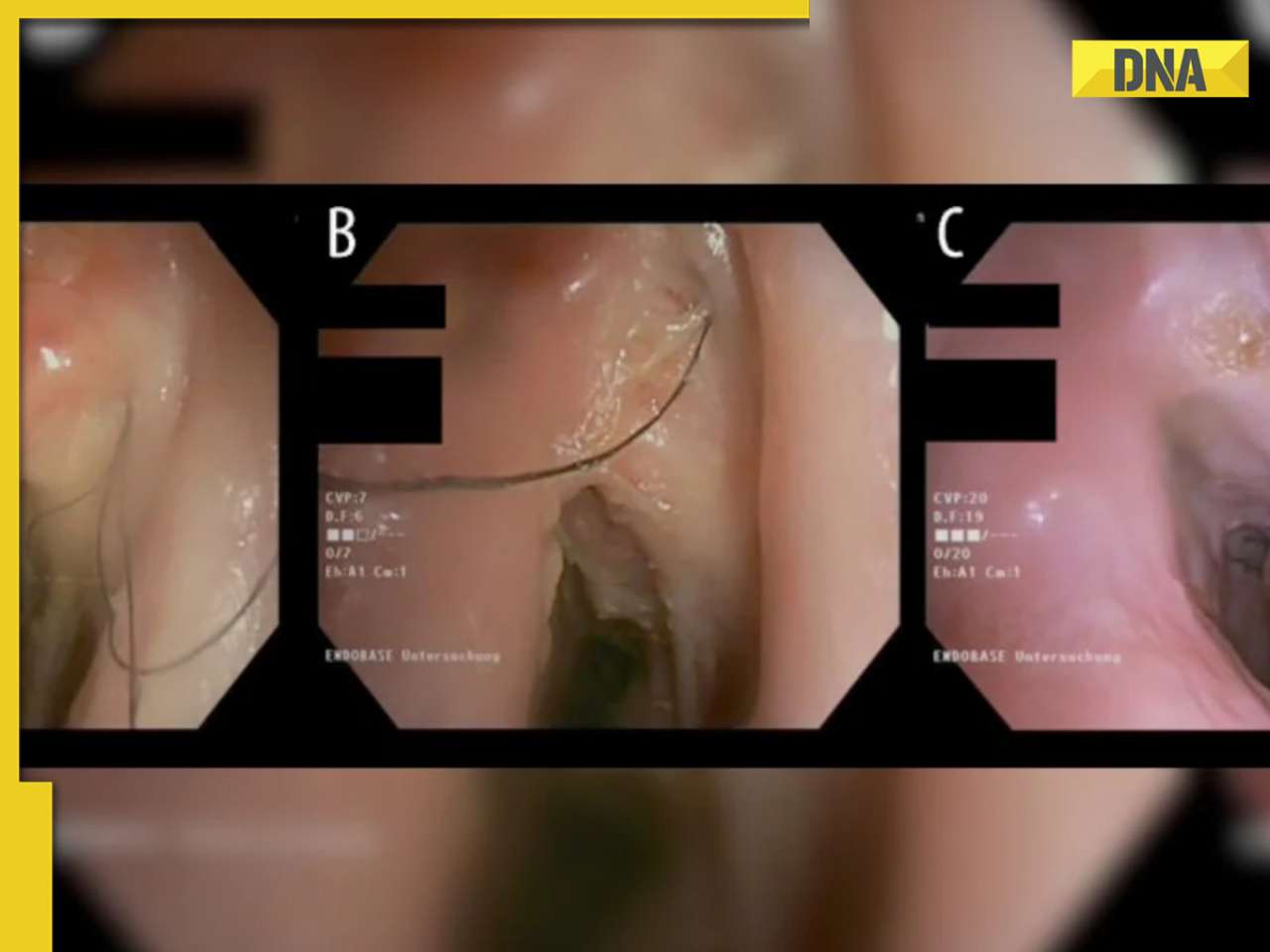The goal of the Chang’e 6 mission is to collect samples from the Moon and bring them back to Earth.
The Chang’e 6 robotic mission successfully landed inside Apollo Crater, which is part of the large South Pole-Aitken basin. According to Chinese space officials, the landing was achieved at 6.23 am (Beijing Time) on Sunday (June 2) equivalent to 3.53 am Indian Time. China’s space agency confirmed that the probe landed in the area they had chosen.
The China National Space Administration (CNSA) now has two successful landings on the far side of the Moon. The first was the Chang’e 4 mission, which placed a lander-rover combo on the lunar surface in January 2019. No other country has managed to accomplish even one far-side landing so far.
The goal of the Chang’e 6 mission is to collect samples from the Moon and bring them back to Earth. This will provide researchers with their first detailed look at material from this specific area of the Moon.
This is the sixth mission in China’s Chang’e Moon exploration programme, named after a Chinese Moon Goddess. The mission will use a mechanical arm and a drill to collect up to 2 kilograms (4.4 pounds) of material from the Moon’s surface and underground over a period of about two days (or 48 hours).
The samples will be placed in a metal vacuum container by an ascender on top of the lander. This ascender will then take the container to another module orbiting the Moon. From there, the metal vacuum container will be transported to a re-entry capsule, which is likely to be back on Earth around June 25, with a desert landing in China’s Inner Mongolia region.
These missions are more difficult to achieve because the far side of the Moon faces away from Earth, making communication tricky and requiring a relay satellite. The terrain is also more rugged, with deep craters, which means there are fewer flat areas for landing.
Chang’e 6 Moon Landing
The Chang’e-6 spacecraft lifted off on a Long March 5 rocket from the Wenchang Satellite Launch Centre on Hainan Island at 5.27 pm (Beijing time) on Friday (May 3), as announced shortly after by the CNSA.
Thirty-seven minutes after launch, the rocket’s second stage separated, placing Chang’e 6 into an Earth-Moon transfer orbit. Four days later, the 8.35-ton spacecraft, consisting of a lander, ascender, orbiter and return capsule, entered lunar orbit and began searching for an ideal landing spot.
On May 30, the lander and ascender separated from the orbiter and return capsule, according to South China Morning Post. At 6.09 am on June 2, the lander fired its 7.5K newton-thrust engine to cut down speed and started its descent from roughly 15 kilometres (9 miles) above the lunar surface.
During the descent, the lander’s cameras took pictures of the landing area and sent them to onboard computers to identify such hazards as large rocks, allowing the craft to navigate around them. Around 100 metres (328 feet) above the lunar surface, the lander hovered briefly to detect smaller obstacles and choose the final landing spot before descending slowly and steadily.
Just a few metres above the surface, the lander shut off its engine and gently touched down on the Moon, making China the only country to achieve a second soft landing on its far side.
Queqiao 2 Supports Moon Mission
The landing process was aided by Queqiao 2, a communications satellite orbiting the Moon that relays signals between the spacecraft and mission control. Queqiao 2 was launched in March this year and is now in lunar orbit.
After two-day surface operations by the lander are completed, the relay station will become crucial in helping the ascender launch from the lander’s top, dock with the orbiter and transport the cargo to the return capsule.
The Enigmatic Far Side of the Moon
The far side of the Moon, often referred to as the ‘dark side of the Moon’, is a bit misleading. While it seems dark from Earth, this side experiences both lunar day and night, getting plenty of sunlight. A lunar day lasts a little over 29 days and a lunar night lasts about two weeks.
This far side always faces away from Earth, making it largely unexplored. Its unique landscape and isolation from Earth’s electromagnetic field make it an excellent location for scientific studies in astronomy and geology. However, since it is invisible from Earth, communicating with this side of the Moon is challenging. To overcome this, missions use relay satellites to send data back to Earth.
Explaining ‘Dark Side of the Moon’
Only one side of the Moon is visible to Earth because of ‘tidal locking’. This happens because the gravitational forces between the Moon and Earth have synchronized the Moon’s rotation with its orbit around Earth. As a result, the same side of the Moon always faces us and the far side experiences day and night just like the near side.
Disclaimer: The views expressed in the article are solely those of the author.
(The author of this article is a Defence, Aerospace & Political Analyst based in Bengaluru. He is also Director of ADD Engineering Components, India, Pvt. Ltd, a subsidiary of ADD Engineering GmbH, Germany)
![submenu-img]() NEET-UG row: INDIA bloc to raise exam paper leak issue in Parliament tomorrow
NEET-UG row: INDIA bloc to raise exam paper leak issue in Parliament tomorrow![submenu-img]() 'You are exploiting...': Gulshan Devaiah criticises Vivek Agnihotri for publicising trauma to sell his The Kashmir Files
'You are exploiting...': Gulshan Devaiah criticises Vivek Agnihotri for publicising trauma to sell his The Kashmir Files![submenu-img]() T20 World Cup, IND vs ENG: Who will qualify for final if rain plays spoilsport in Guyana? Know DLS rules, cut-off time
T20 World Cup, IND vs ENG: Who will qualify for final if rain plays spoilsport in Guyana? Know DLS rules, cut-off time![submenu-img]() Best Options Trading Courses in India
Best Options Trading Courses in India![submenu-img]() Restolane Launches Its Online Store for Restaurant Equipment
Restolane Launches Its Online Store for Restaurant Equipment![submenu-img]() The Meaning of Distance Learning Courses
The Meaning of Distance Learning Courses![submenu-img]() Meet Indian genius who built first car factory in India, he is called 'Father of...'
Meet Indian genius who built first car factory in India, he is called 'Father of...'![submenu-img]() Meet Indian scientist developed 'artificial cancer', he is called 'Father of...
Meet Indian scientist developed 'artificial cancer', he is called 'Father of...![submenu-img]() Meet genius born in poverty, walked barefoot to school, become one of India's top scientists
Meet genius born in poverty, walked barefoot to school, become one of India's top scientists![submenu-img]() Meet IAS officer who once lived like a monk, then cracked UPSC exam with AIR 30, she is posted at…
Meet IAS officer who once lived like a monk, then cracked UPSC exam with AIR 30, she is posted at…![submenu-img]() DNA Verified: Did Kangana Ranaut party with gangster Abu Salem? Actress reveals who's with her in viral photo
DNA Verified: Did Kangana Ranaut party with gangster Abu Salem? Actress reveals who's with her in viral photo![submenu-img]() DNA Verified: New Delhi Railway Station to be closed for 4 years? Know the truth here
DNA Verified: New Delhi Railway Station to be closed for 4 years? Know the truth here![submenu-img]() DNA Verified: Did RSS chief Mohan Bhagwat praise Congress during Lok Sabha Elections 2024? Know the truth here
DNA Verified: Did RSS chief Mohan Bhagwat praise Congress during Lok Sabha Elections 2024? Know the truth here![submenu-img]() DNA Verified: Is CAA an anti-Muslim law? Centre terms news report as 'misleading'
DNA Verified: Is CAA an anti-Muslim law? Centre terms news report as 'misleading'![submenu-img]() DNA Verified: Lok Sabha Elections 2024 to be held on April 19? Know truth behind viral message
DNA Verified: Lok Sabha Elections 2024 to be held on April 19? Know truth behind viral message![submenu-img]() Alia Bhatt mesmerises in gown, Ranbir Kapoor looks classy in tuxedo in latest romantic photos, fans say 'couple goals'
Alia Bhatt mesmerises in gown, Ranbir Kapoor looks classy in tuxedo in latest romantic photos, fans say 'couple goals'![submenu-img]() Newlyweds Sonakshi Sinha-Zaheer Iqbal pose candidly with paps; Anil Kapoor, Kajol, Huma Qureshi attend wedding reception
Newlyweds Sonakshi Sinha-Zaheer Iqbal pose candidly with paps; Anil Kapoor, Kajol, Huma Qureshi attend wedding reception![submenu-img]() Meet Lovekesh Kataria: Elvish Yadav's close friend, Bigg Boss OTT 3 contestant who lied to father, spent his fees on...
Meet Lovekesh Kataria: Elvish Yadav's close friend, Bigg Boss OTT 3 contestant who lied to father, spent his fees on...![submenu-img]() From Highway to Chandu Champion: 5 underrated gems from Sajid Nadiadwala
From Highway to Chandu Champion: 5 underrated gems from Sajid Nadiadwala![submenu-img]() In pics: Bigg Boss OTT 3 house with dragons, two-sided walls is all about fantasy coming alive
In pics: Bigg Boss OTT 3 house with dragons, two-sided walls is all about fantasy coming alive![submenu-img]() Lok Sabha Speaker's Election: What does the Constitution say?
Lok Sabha Speaker's Election: What does the Constitution say?![submenu-img]() Explained: Why is Kerala demanding to change its name to Keralam?
Explained: Why is Kerala demanding to change its name to Keralam?![submenu-img]() DNA Explainer: What is Kafala system that is prevalent in gulf countries? Why is it considered extremely brutal?
DNA Explainer: What is Kafala system that is prevalent in gulf countries? Why is it considered extremely brutal? ![submenu-img]() Lok Sabha Elections 2024: What are exit polls? When and how are they conducted?
Lok Sabha Elections 2024: What are exit polls? When and how are they conducted?![submenu-img]() DNA Explainer: Why was Iranian president Ebrahim Raisi seen as possible successor to Ayatollah Khamenei?
DNA Explainer: Why was Iranian president Ebrahim Raisi seen as possible successor to Ayatollah Khamenei?![submenu-img]() 'You are exploiting...': Gulshan Devaiah criticises Vivek Agnihotri for publicising trauma to sell his The Kashmir Files
'You are exploiting...': Gulshan Devaiah criticises Vivek Agnihotri for publicising trauma to sell his The Kashmir Files![submenu-img]() Kalki 2898 AD: SS Rajamouli says Prabhas' film took him to 'whole new world', Suriya calls it 'all-time blockbuster'
Kalki 2898 AD: SS Rajamouli says Prabhas' film took him to 'whole new world', Suriya calls it 'all-time blockbuster'![submenu-img]() Meet Salman Khan's co-star, who was left penniless by husband, sister; did B-grade films, actor became her saviour by...
Meet Salman Khan's co-star, who was left penniless by husband, sister; did B-grade films, actor became her saviour by...![submenu-img]() 'Bloodbath is about to...': Varun Dhawan looks intense in new Baby John poster, fans call him 'killer'
'Bloodbath is about to...': Varun Dhawan looks intense in new Baby John poster, fans call him 'killer' ![submenu-img]() This superhit was remake of Kamal Haasan film, was rejected by SRK, Dilip Kumar, Naseer; opened on dull note, earned...
This superhit was remake of Kamal Haasan film, was rejected by SRK, Dilip Kumar, Naseer; opened on dull note, earned...![submenu-img]() 'I need your help': Ratan Tata is looking for a blood donor for...
'I need your help': Ratan Tata is looking for a blood donor for...![submenu-img]() Viral video: Pranksters splash water on moving train, get thrashed by passengers and police seize bike
Viral video: Pranksters splash water on moving train, get thrashed by passengers and police seize bike![submenu-img]() Shocking! Woman gets harsher sentence than her rapist due to...
Shocking! Woman gets harsher sentence than her rapist due to...![submenu-img]() Bizzare: Man develops hair in throat due to...
Bizzare: Man develops hair in throat due to...![submenu-img]() Meet woman, daughter of millionaire, who gave up Rs 2500 crore property to marry a common man, her father is....
Meet woman, daughter of millionaire, who gave up Rs 2500 crore property to marry a common man, her father is....








































)


















)
)
)
)
)
)